
In his 3 years at Kentucky, Calipari has successfully helped put large groups of his players into the NBA draft. Without knowing the exact placement as far as draft order and team for this year's Kentucky draft class, we can still project how we think they will perform overall as a group in the NBA. The other two Calipari draft classes are in the very young years of their NBA careers, with plenty of room for growth and change moving forward.
But if you had to guess, 10 years from now when we look back upon these 3 different Calipari/Kentucky draft classes, which class do you think will have the most overall success as a group in the NBA?
The case for the 2010 class:
The players: John Wall, Demarcus Cousins, Patrick Patterson, Eric Bledsoe and Daniel Orton
Star potential: John Wall and Demarcus Cousins are the two players out of this draft class to break into the star role on their NBA teams so far. Wall is surrounded by very little help in Washington, but he's probably the most talented player on the floor, oozing with potential--waiting for help (or a trade). Cousins struggled early in his career to stay in positive standing with his coaches, but now he has put together one of the most impressive second NBA seasons in the league. Cousins averaged 18.1 points and 10.9 rebounds this season.
Solid rotation players: Patrick Patterson and Eric Bledsoe have both been able to earn themselves minutes for their respective teams in their 2 NBA seasons. Bledsoe's team has upgraded significantly, becoming a playoff team. Eric Bledsoe has had a huge role already in his first playoff experience. People in LA are starting to call him the team's "x factor." Though he will not find himself starting anytime soon with Chris Paul in LA, he has carved out a perfect niche for himself as another go-to guard who can make big time plays for the Clippers. Patrick Patterson still finds himself on a team with a lot of post players vying for minutes. While Patterson hasn't moved into the starting line-up, he averaged 11.58 minutes per game, producing 7.7 points and 4.5 rebounds per game in his time on the court. Patterson had a few big games stat-wise for the Rockets this season and figures to be a steady contributor in the NBA for seasons to come, though likely not putting up "star" numbers.
Question mark players: Daniel Orton appeared to finally get the chance he had been waiting for in Orlando when Dwight Howard went down with a season-ending injury. Orton even got called in for starting duty late in the season. But by the time the Magic reached the playoffs, Orton was relegated to spot duty once again. Orton showed flashes of potential in a few games after Howard went down, but has yet to prove that he will have a major impact or a consistent impact in the NBA.
The case for the 2011 class:
The players: Enes Kanter, Brandon Knight, Josh Harrellson and DeAndre Liggins
Star potential: It may be too early to tell with Brandon Knight or Enes Kanter, but I would guess that if anyone in this class had the chance to be a breakout star in the next year or two it would be Brandon Knight. Kanter still appears to need some polish to his game before deciding what his ceiling will be in the NBA. Brandon Knight is a quiet guy, the hard-working nose to the ground type. His big statistical games often come across as quiet, sometimes overshadowed by other performances. After facing questions about whether or not he could compete as a point guard in the NBA, he answered the call well in his rookie season for the Detroit Pistons. Knight started 60 games (out of 66) for the Pistons, averaging 12.8 points and 3.8 assists in 32.3 minutes of action. I'm not quite sure Knight fits into the "star potential" category, but he's probably somewhere in between that category and the "solid rotation players" category.
Solid rotation players: Enes Kanter seems to have a few years ahead of him before he reaches his NBA potential. After missing a year of playing in college, Kanter looked behind at times in his development. With that said, he still averaged 10.8 minutes per game for the Utah Jazz. His numbers were not overly impressive (3.5 points, 4.0 rebounds), but his expected potential with the Jazz still remains high. Josh Harrellson continues to prove the doubters wrong. Few expected him to be drafted. And then when he was selected by the Knicks, many were hesitant to bank on his success and staying power on the roster. Other than a mid-season injury, Harrellson had a solid season for the playoff New York Knicks. Harrellson averaged 14.6 minutes per game during the regular season, averaging 4.4 points and 3.9 rebounds per game.
Question mark players: DeAndre Liggins. The guy has made a few appearances here and there in the line-up for the Orlando Magic but has yet to find his role on the team. Liggins may not have a long-term future with the Magic, but his defensive game could potentially get him a look somewhere else in the future.
The case for the 2012 class:
The players: Anthony Davis, Michael Kidd-Gilchrist, Terrence Jones, Marquis Teague, Doron Lamb and Darius Miller.
Star potential: Anthony Davis, Anthony Davis, Anthony Davis. Some NBA experts are already pinning whichever awful team picks him with the 1st pick to instantly catapult to 50 wins next season. That seems like a long shot, but one thing is for certain: all eyes will be on Anthony Davis next season in the NBA. He rose to the occasion and took over college basketball last season. The NBA is a different beast, but Davis seems primed to have a breakout career. Expectations are high, with people wondering if he could be one of the greatest UK players to ever play in the NBA. Time will tell. I wouldn't bet against the kid. Michael Kidd-Gilchrist feels more like a role player because of all of the small things that he did in his time while at Kentucky. His scoring line wasn't always at the top for the Wildcats, but he consistently stuffed the stat sheet in all areas, often contributing in ways that were hard to measure. It will be interesting to see how his role expands or if it stays similar when he enters the NBA next season. His ability to score in a number of ways, especially around the basket, mixed with his pure athleticism should give him a chance to be a special player for whichever team drafts him.
Solid rotation players: I think Terrence Jones and Marquis Teague probably fit this description the best. Both are potential breakout stars, but they are not as sure fire as an Anthony Davis for example. Both players will likely compete for minutes on whatever team selects them.
Question marks: The label of "question marks" should not be considered negative in this scenario for Darius Miller and Doron Lamb. I actually think the potential for Miller in the NBA to have success and consistently contribute to a team is very high. I think the experts have more tempered expectations, but Miller isn't necessarily a flashy player to grab everyone's attention. In his 3 years under Calipari at Kentucky though, with a slew of flashy players surrounding him--he always found his way onto the court. Doron Lamb is tricky. His pure shooting would seem to be an asset for a team in need of that skill set. He can also score from mid-range and around the rim. His size and overall athleticism are probably the biggest question marks in how his NBA career plays out. For Lamb, it might be all about finding the right team and then I think he can easily slide right into that "solid rotation player" category.
Which of Calipari's NBA classes to do you think looking back 10 years from now, will have the most overall success in the NBA?
My guess? I like the 2010 class. The 2012 class could very well be similar with the level of talent among the players. It's probably a little easier to gauge the 2010 class at this point until we see what the 2012 class does in their first season.
 In his 3 years at Kentucky, Calipari has successfully helped put large groups of his players into the NBA draft. Without knowing the exact placement as far as draft order and team for this year's Kentucky draft class, we can still project how we think they will perform overall as a group in the NBA. The other two Calipari draft classes are in the very young years of their NBA careers, with plenty of room for growth and change moving forward. But if you had to guess, 10 years from now when we look back upon these 3 different Calipari/Kentucky draft classes, which class do you think will have the most overall success as a group in the NBA?
The case for the 2010 class:
The players: John Wall, Demarcus Cousins, Patrick Patterson, Eric Bledsoe and Daniel Orton
Star potential: John Wall and Demarcus Cousins are the two players out of this draft class to break into the star role on their NBA teams so far. Wall is surrounded by very little help in Washington, but he's probably the most talented player on the floor, oozing with potential--waiting for help (or a trade). Cousins struggled early in his career to stay in positive standing with his coaches, but now he has put together one of the most impressive second NBA seasons in the league. Cousins averaged 18.1 points and 10.9 rebounds this season.
Solid rotation players: Patrick Patterson and Eric Bledsoe have both been able to earn themselves minutes for their respective teams in their 2 NBA seasons. Bledsoe's team has upgraded significantly, becoming a playoff team. Eric Bledsoe has had a huge role already in his first playoff experience. People in LA are starting to call him the team's "x factor." Though he will not find himself starting anytime soon with Chris Paul in LA, he has carved out a perfect niche for himself as another go-to guard who can make big time plays for the Clippers. Patrick Patterson still finds himself on a team with a lot of post players vying for minutes. While Patterson hasn't moved into the starting line-up, he averaged 11.58 minutes per game, producing 7.7 points and 4.5 rebounds per game in his time on the court. Patterson had a few big games stat-wise for the Rockets this season and figures to be a steady contributor in the NBA for seasons to come, though likely not putting up "star" numbers.
Question mark players: Daniel Orton appeared to finally get the chance he had been waiting for in Orlando when Dwight Howard went down with a season-ending injury. Orton even got called in for starting duty late in the season. But by the time the Magic reached the playoffs, Orton was relegated to spot duty once again. Orton showed flashes of potential in a few games after Howard went down, but has yet to prove that he will have a major impact or a consistent impact in the NBA.
The case for the 2011 class:
The players: Enes Kanter, Brandon Knight, Josh Harrellson and DeAndre Liggins
Star potential: It may be too early to tell with Brandon Knight or Enes Kanter, but I would guess that if anyone in this class had the chance to be a breakout star in the next year or two it would be Brandon Knight. Kanter still appears to need some polish to his game before deciding what his ceiling will be in the NBA. Brandon Knight is a quiet guy, the hard-working nose to the ground type. His big statistical games often come across as quiet, sometimes overshadowed by other performances. After facing questions about whether or not he could compete as a point guard in the NBA, he answered the call well in his rookie season for the Detroit Pistons. Knight started 60 games (out of 66) for the Pistons, averaging 12.8 points and 3.8 assists in 32.3 minutes of action. I'm not quite sure Knight fits into the "star potential" category, but he's probably somewhere in between that category and the "solid rotation players" category.
Solid rotation players: Enes Kanter seems to have a few years ahead of him before he reaches his NBA potential. After missing a year of playing in college, Kanter looked behind at times in his development. With that said, he still averaged 10.8 minutes per game for the Utah Jazz. His numbers were not overly impressive (3.5 points, 4.0 rebounds), but his expected potential with the Jazz still remains high. Josh Harrellson continues to prove the doubters wrong. Few expected him to be drafted. And then when he was selected by the Knicks, many were hesitant to bank on his success and staying power on the roster. Other than a mid-season injury, Harrellson had a solid season for the playoff New York Knicks. Harrellson averaged 14.6 minutes per game during the regular season, averaging 4.4 points and 3.9 rebounds per game.
Question mark players: DeAndre Liggins. The guy has made a few appearances here and there in the line-up for the Orlando Magic but has yet to find his role on the team. Liggins may not have a long-term future with the Magic, but his defensive game could potentially get him a look somewhere else in the future.
The case for the 2012 class:
The players: Anthony Davis, Michael Kidd-Gilchrist, Terrence Jones, Marquis Teague, Doron Lamb and Darius Miller.
Star potential: Anthony Davis, Anthony Davis, Anthony Davis. Some NBA experts are already pinning whichever awful team picks him with the 1st pick to instantly catapult to 50 wins next season. That seems like a long shot, but one thing is for certain: all eyes will be on Anthony Davis next season in the NBA. He rose to the occasion and took over college basketball last season. The NBA is a different beast, but Davis seems primed to have a breakout career. Expectations are high, with people wondering if he could be one of the greatest UK players to ever play in the NBA. Time will tell. I wouldn't bet against the kid. Michael Kidd-Gilchrist feels more like a role player because of all of the small things that he did in his time while at Kentucky. His scoring line wasn't always at the top for the Wildcats, but he consistently stuffed the stat sheet in all areas, often contributing in ways that were hard to measure. It will be interesting to see how his role expands or if it stays similar when he enters the NBA next season. His ability to score in a number of ways, especially around the basket, mixed with his pure athleticism should give him a chance to be a special player for whichever team drafts him.
Solid rotation players: I think Terrence Jones and Marquis Teague probably fit this description the best. Both are potential breakout stars, but they are not as sure fire as an Anthony Davis for example. Both players will likely compete for minutes on whatever team selects them.
Question marks: The label of "question marks" should not be considered negative in this scenario for Darius Miller and Doron Lamb. I actually think the potential for Miller in the NBA to have success and consistently contribute to a team is very high. I think the experts have more tempered expectations, but Miller isn't necessarily a flashy player to grab everyone's attention. In his 3 years under Calipari at Kentucky though, with a slew of flashy players surrounding him--he always found his way onto the court. Doron Lamb is tricky. His pure shooting would seem to be an asset for a team in need of that skill set. He can also score from mid-range and around the rim. His size and overall athleticism are probably the biggest question marks in how his NBA career plays out. For Lamb, it might be all about finding the right team and then I think he can easily slide right into that "solid rotation player" category.
Which of Calipari's NBA classes to do you think looking back 10 years from now, will have the most overall success in the NBA? My guess? I like the 2010 class. The 2012 class could very well be similar with the level of talent among the players. It's probably a little easier to gauge the 2010 class at this point until we see what the 2012 class does in their first season.
In his 3 years at Kentucky, Calipari has successfully helped put large groups of his players into the NBA draft. Without knowing the exact placement as far as draft order and team for this year's Kentucky draft class, we can still project how we think they will perform overall as a group in the NBA. The other two Calipari draft classes are in the very young years of their NBA careers, with plenty of room for growth and change moving forward. But if you had to guess, 10 years from now when we look back upon these 3 different Calipari/Kentucky draft classes, which class do you think will have the most overall success as a group in the NBA?
The case for the 2010 class:
The players: John Wall, Demarcus Cousins, Patrick Patterson, Eric Bledsoe and Daniel Orton
Star potential: John Wall and Demarcus Cousins are the two players out of this draft class to break into the star role on their NBA teams so far. Wall is surrounded by very little help in Washington, but he's probably the most talented player on the floor, oozing with potential--waiting for help (or a trade). Cousins struggled early in his career to stay in positive standing with his coaches, but now he has put together one of the most impressive second NBA seasons in the league. Cousins averaged 18.1 points and 10.9 rebounds this season.
Solid rotation players: Patrick Patterson and Eric Bledsoe have both been able to earn themselves minutes for their respective teams in their 2 NBA seasons. Bledsoe's team has upgraded significantly, becoming a playoff team. Eric Bledsoe has had a huge role already in his first playoff experience. People in LA are starting to call him the team's "x factor." Though he will not find himself starting anytime soon with Chris Paul in LA, he has carved out a perfect niche for himself as another go-to guard who can make big time plays for the Clippers. Patrick Patterson still finds himself on a team with a lot of post players vying for minutes. While Patterson hasn't moved into the starting line-up, he averaged 11.58 minutes per game, producing 7.7 points and 4.5 rebounds per game in his time on the court. Patterson had a few big games stat-wise for the Rockets this season and figures to be a steady contributor in the NBA for seasons to come, though likely not putting up "star" numbers.
Question mark players: Daniel Orton appeared to finally get the chance he had been waiting for in Orlando when Dwight Howard went down with a season-ending injury. Orton even got called in for starting duty late in the season. But by the time the Magic reached the playoffs, Orton was relegated to spot duty once again. Orton showed flashes of potential in a few games after Howard went down, but has yet to prove that he will have a major impact or a consistent impact in the NBA.
The case for the 2011 class:
The players: Enes Kanter, Brandon Knight, Josh Harrellson and DeAndre Liggins
Star potential: It may be too early to tell with Brandon Knight or Enes Kanter, but I would guess that if anyone in this class had the chance to be a breakout star in the next year or two it would be Brandon Knight. Kanter still appears to need some polish to his game before deciding what his ceiling will be in the NBA. Brandon Knight is a quiet guy, the hard-working nose to the ground type. His big statistical games often come across as quiet, sometimes overshadowed by other performances. After facing questions about whether or not he could compete as a point guard in the NBA, he answered the call well in his rookie season for the Detroit Pistons. Knight started 60 games (out of 66) for the Pistons, averaging 12.8 points and 3.8 assists in 32.3 minutes of action. I'm not quite sure Knight fits into the "star potential" category, but he's probably somewhere in between that category and the "solid rotation players" category.
Solid rotation players: Enes Kanter seems to have a few years ahead of him before he reaches his NBA potential. After missing a year of playing in college, Kanter looked behind at times in his development. With that said, he still averaged 10.8 minutes per game for the Utah Jazz. His numbers were not overly impressive (3.5 points, 4.0 rebounds), but his expected potential with the Jazz still remains high. Josh Harrellson continues to prove the doubters wrong. Few expected him to be drafted. And then when he was selected by the Knicks, many were hesitant to bank on his success and staying power on the roster. Other than a mid-season injury, Harrellson had a solid season for the playoff New York Knicks. Harrellson averaged 14.6 minutes per game during the regular season, averaging 4.4 points and 3.9 rebounds per game.
Question mark players: DeAndre Liggins. The guy has made a few appearances here and there in the line-up for the Orlando Magic but has yet to find his role on the team. Liggins may not have a long-term future with the Magic, but his defensive game could potentially get him a look somewhere else in the future.
The case for the 2012 class:
The players: Anthony Davis, Michael Kidd-Gilchrist, Terrence Jones, Marquis Teague, Doron Lamb and Darius Miller.
Star potential: Anthony Davis, Anthony Davis, Anthony Davis. Some NBA experts are already pinning whichever awful team picks him with the 1st pick to instantly catapult to 50 wins next season. That seems like a long shot, but one thing is for certain: all eyes will be on Anthony Davis next season in the NBA. He rose to the occasion and took over college basketball last season. The NBA is a different beast, but Davis seems primed to have a breakout career. Expectations are high, with people wondering if he could be one of the greatest UK players to ever play in the NBA. Time will tell. I wouldn't bet against the kid. Michael Kidd-Gilchrist feels more like a role player because of all of the small things that he did in his time while at Kentucky. His scoring line wasn't always at the top for the Wildcats, but he consistently stuffed the stat sheet in all areas, often contributing in ways that were hard to measure. It will be interesting to see how his role expands or if it stays similar when he enters the NBA next season. His ability to score in a number of ways, especially around the basket, mixed with his pure athleticism should give him a chance to be a special player for whichever team drafts him.
Solid rotation players: I think Terrence Jones and Marquis Teague probably fit this description the best. Both are potential breakout stars, but they are not as sure fire as an Anthony Davis for example. Both players will likely compete for minutes on whatever team selects them.
Question marks: The label of "question marks" should not be considered negative in this scenario for Darius Miller and Doron Lamb. I actually think the potential for Miller in the NBA to have success and consistently contribute to a team is very high. I think the experts have more tempered expectations, but Miller isn't necessarily a flashy player to grab everyone's attention. In his 3 years under Calipari at Kentucky though, with a slew of flashy players surrounding him--he always found his way onto the court. Doron Lamb is tricky. His pure shooting would seem to be an asset for a team in need of that skill set. He can also score from mid-range and around the rim. His size and overall athleticism are probably the biggest question marks in how his NBA career plays out. For Lamb, it might be all about finding the right team and then I think he can easily slide right into that "solid rotation player" category.
Which of Calipari's NBA classes to do you think looking back 10 years from now, will have the most overall success in the NBA? My guess? I like the 2010 class. The 2012 class could very well be similar with the level of talent among the players. It's probably a little easier to gauge the 2010 class at this point until we see what the 2012 class does in their first season.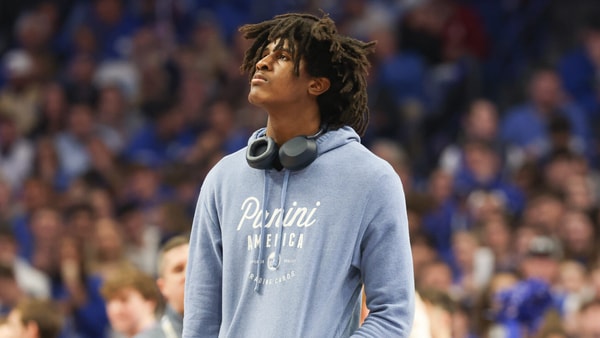
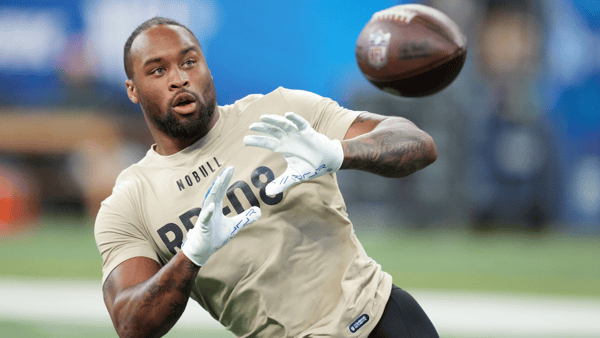
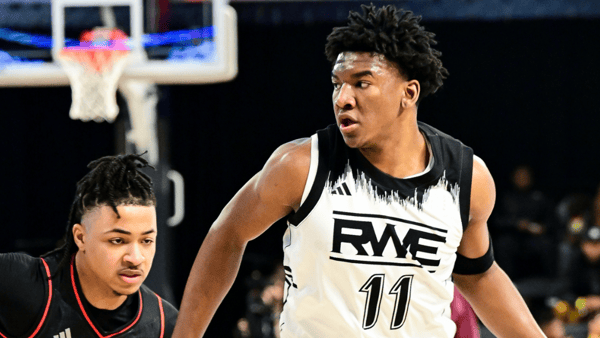
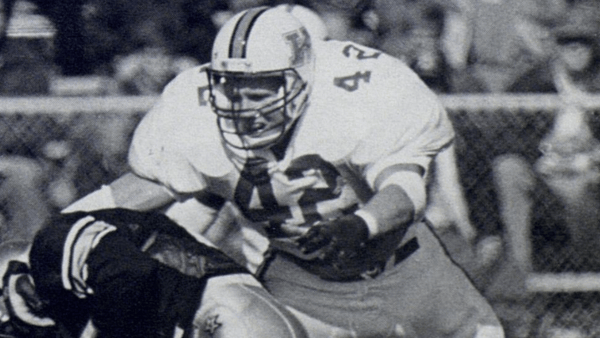
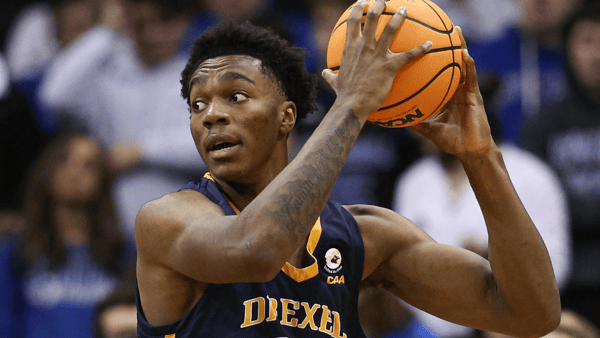
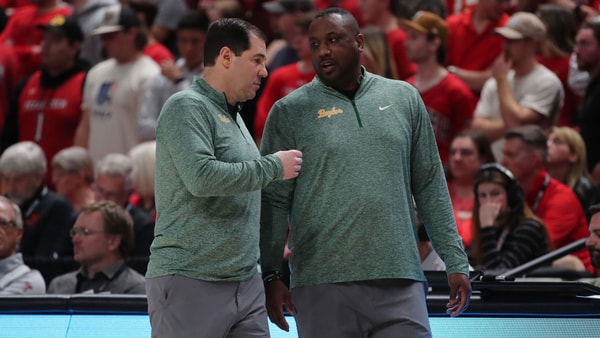
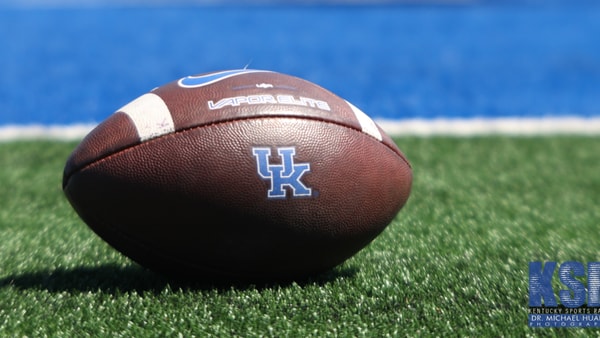
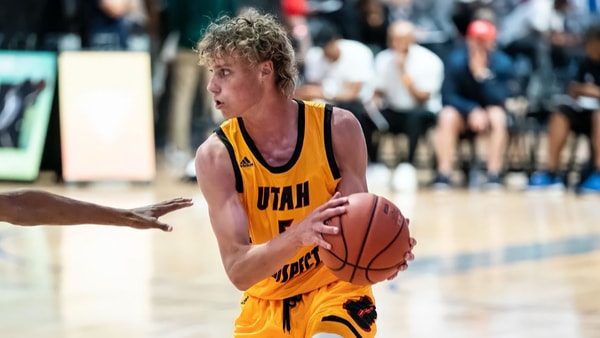
Discuss This Article
Comments have moved.
Join the conversation and talk about this article and all things Kentucky Sports in the new KSR Message Board.
KSBoard